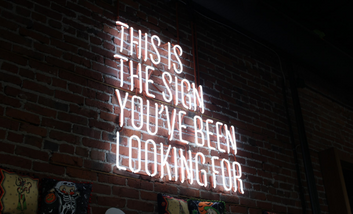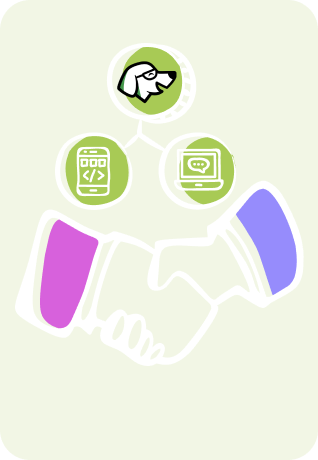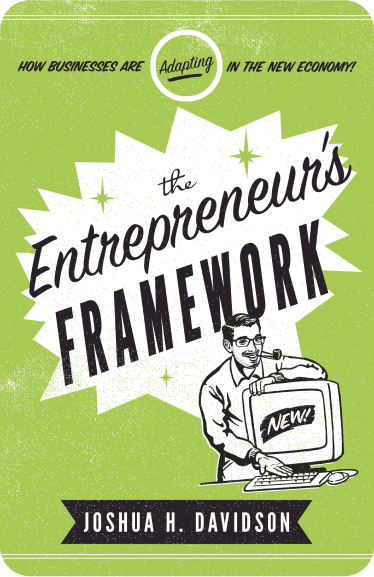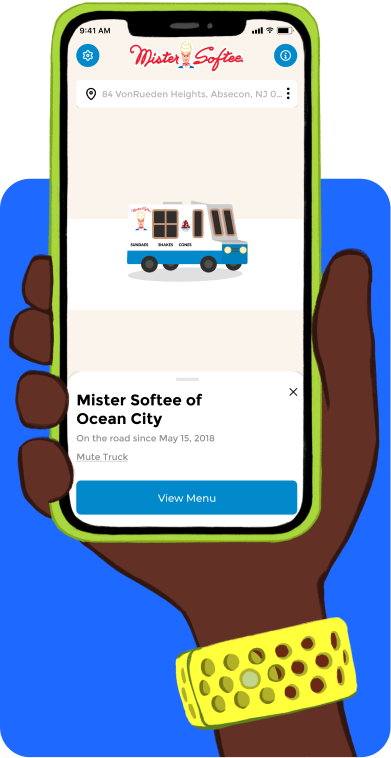In a perfect world, your startup has thousands of dollars set aside and already ear-marked for marketing and user education for your app post-launch. But we know that’s not always the case.
While enterprise-level companies typically have robust in-house marketing teams or can afford to contract getting the word out about their app to a state-of-the-art marketing agency, smaller companies and startups typically need to be a bit more fastidious in their approach to marketing.
And that’s okay — because there’s a lot you can do to bolster your app’s early marketing efforts; thanks to social media and free content creation tools.
Gaining An Early Audience
One of the biggest mistakes apps make is waiting until after launch to start marketing.
While having a tangible, real-world product is the priority for many before marketing (and it certainly does make it easier), the benefits to marketing your app pre-launch are many.
Social media is a given for brands today, but it should also be a given for your early-stage startup. Don’t wait until after your app is launched to start organically building your online presence.
Early on, you’re not going to necessarily have the budget to advertise your app, nor should you in most cases while it’s still being actively worked on.
But you can actively invest in building up your own professional and your app’s eco-system to gain an early audience of supporters — taking advantage of what might otherwise be downtime to start building up your new venture.
To get started, you should create social media accounts for your app as soon as possible.
Traditionally, LinkedIn has been geared towards professionals and those seeking out new work opportunities.
While the professional element has remained, LinkedIn has become a fully-fledged social media network with incredibly high organic reach for more than just jobseekers.
Be mindful of who sets up your app’s LinkedIn page, however, as each business profile is connected to the LinkedIn user who originally set it up, with the ability to grant administrative access to future team members.
Not only should your company’s LinkedIn page look professional, but so should your personal account. If you are an appreneur and do not currently have a LinkedIn profile or haven’t updated it in a while…click ‘file’, ‘new tab’ and get to it!
X (Formerly Twitter)
Some say X is dead; still others say it’s doing better than ever. No matter which ship you happen to be on personally, X for some brands, influencers, and startups is doing very well indeed.
While it can be arduously slow to gain traction in the form of follower count, it can be argued that the bigger benefit to X is your own account’s follow-ing list.
By curating who you follow on X, you can be on the front lines to the latest in what’s happening in your app’s space.
Follow industry news sources, influencers in the space you admire, accelerator programs and VCs, even tech events. You never know when you’ll come across a tweet with an opportunity to change everything for your app.
While still a fledgling social media network next to its predecessor, Meta-owned competitor app Threads has covered a lot of ground quickly.
The same advice given above applies to Threads given the remarkably similar format of the two.
Amassing one million users in record time with its record push across Facebook and Instagram platforms, it is well worth your time to invest in this platform instead.
Or heck, get on both while you’re at it and simply hedge your bet.
Facebook is my least favorite of all the social media platforms currently as far as organic reach and connection-making. It just isn’t there right now; at least not for free.
The addition of reels to the ‘explore’ section of the newsfeed has helped some businesses get traction, but that’s only if you’re creating compelling reels in the first place.
As Facebook attempts to remedy growing user dissatisfaction with what’s on the feed, this has seemed to put a chokehold on a business profile’s potential organic reach.
But crafting an entire eco-system around your app is important, and at a minimum, you can start by inviting your personal Facebook network to interact with your app’s Facebook page while it gains traction.
Arguably the newest, ‘hippest’ of the social platforms currently (outside of Tik Tok, still untested for startup marketing as of yet), Instagram is a must for your app.
Even if Instagram’s vibe seems completely outside of your industry’s lane, it’s just a good look and the visual nature of Instagram makes it a great place to interact with your app’s future users.
Whether you adhere to a grid aesthetic or post at will, you can’t go wrong with the right hashtags (up to thirty per post, by the way).
Instagram also gives preferential feed treatment to accounts who post reels and video, so keep that in mind when it comes to maximum engagement!
Aim for hashtags with 50,000 posts or less for maximum exposure, and switch them up often for different reach to see what works best.
Social Media Do’s and Don’ts
By order of priority, (if time and resources are truly stretched thin – though I would argue that social media content management tools exist for this exact scenario), if you have to choose which social media platforms to invest in early on, pick LinkedIn and X.
The organic reach, coupled with the professional element to LinkedIn and X’s useful algorithm when it comes to following list curation make them to me, the highest ROI when it comes to potential exposure.
Instagram follows closely behind LinkedIn in organic reach thanks to hashtags, but loses a few point just because apps in certain industries may find difficulty establishing an audience early on, and it requires more significant investment in visual content creation.
Unlike with the other social media platforms listed, Instagram does not inherently support sharing content curated from third-party sources (besides using a repost app), such as links to relevant articles and current events.
That’s where Canva comes in.
Canva, Your Free Content Creation Tool for Social Media

Canva is a great online content creation tool for the photoshop un-savvy.
With built-in guidance tools to help with alignment and a full library of modern templates, graphics and animations to choose from, Canva can help make your app look like it has a full team of marketers behind it.
Canva mastered the freemium model, offering a free version of their product that offers a heck of a lot of value, and a premium subscription for just $10.99 a month.
While you can get by with the free version of Canva, we wholeheartedly feel that the paid version is worth the nominal monthly fee.
It offers the option to resize an image to different aspect ratios for cross-posting ease, download images with transparent backgrounds and access to premium, highly customizable hand-drawn graphics to use in your own creations.
We also love that Canva’s user interface creates a handy, makeshift template library for all of your past designs to live and easily be altered moving forward for any future posts.
And of course, you can also create your own official templates (just use some of Canva’s templates as a jumping off point) and brand color palette accessible on the platform via your team account as well.
The Online Hex Color Tool
Now that you’ve got the in’s and out’s of Canva down, you need to come up with an overall visual aesthetic that you will incorporate into social media posts created for your app.
Typically, this means starting with your app’s color scheme or existing company’s branding if applicable.
Once you have the hex codes for your app’s color scheme (you can even download a free Google Chrome plugin to ‘pick’ colors out of webpages if you need it), you can use them as a jumping off point in Canva’s editor tools to create branded marketing graphics.
Let’s say you’d like some incremental variations based off the colors our amazing designers have crafted for your app. You can use this free hex color tool to find lighter or darker variations of your app’s color scheme and more.
The Online Photo Editor for Backgrounds
Not all of us can be photoshop whizzes.
And that’s okay.
If you’re in a pinch and you need to edit the background off of a logo or other image, you can use this free online background editor.
It’s a free, extremely simplified photoshop-like tool which allows you to highlight parts of an image you want to keep in green, and subtracts elements you want out with a red highlighter tool. The premium version of Canva also includes a Background remover feature.
It’s not without it’s kinks and certain images come out better than others, but it can be quite useful with practice if you’re in a pinch and need the background edited off of something real quick.
Every content creator has been there! Get ahold assets with transparent backgrounds (PNGs) related to your app, whether it’s logos, app screens, or even in-app elements for future marketing and branding materials.
Having a library with these assets readily available will only help fuel your content creation efforts.
LinkTree is Your Blog’s Best Friend
Worried about content? As in, what social media posts for your app are actually going to be about? Social media is a natural place to show off any revolving blog content by uploading new posts with the ever popular “link in bio” message so often seen on Instagram or even Twitter.
Starting a blog on your app’s splash site is a great way to gain early traction for your app and work on building up your app SEO, too.
Setting up a LinkTree for your app can not only help establish legitimacy early on, but allow you to drive traffic to several areas of your blog or website by using it as your website URL on social platforms.
A free version gets you in the door with setup, but for only $6 a month, you can upgrade to the premium version, which allows you to fully customize the appearance of your app’s LinkTree landing page.
If you are so early into your project you do not yet have a splash site, that’s where LinkTree can serve as a makeshift portal to shift your audience’s attention to your various social media platforms working hard to get you early traction.
If you don’t have the time to personally write blogs or don’t have anyone dedicated on the team just yet, think about finding a freelance blogger to help out.
The going rate can be anywhere between $50-$100 for a well-written blog post, so be wary of any sources offering posts for much less. If you do use them, be prepared to proofread before posting.
Social Media Content Management Tools
You might be reading all of this right now, and wondering where you’re going to find the time to keep up with regularly posting to social media to start building up your app’s eco-system.
Your time is valuable, and while you’ll still need to put the effort and brainpower into figuring out how to best market your app (or find someone who can do all of that for you), there are some incredible tools out there to help you curate your social feeds when it works best for you, not the other way around.
Early on, before you have a dedicated marketing team, this tool honestly serves as a makeshift marketing employee for you.
It’s the social media content management tool, including:
Buffer – You can add up to ten social posts to a queue at once per account for up to three different social accounts free. It’s $100 a month to unlock unlimited posts in the queue (for those who really like to plan far out).
Hootsuite – You can add up to ten social posts for up to three accounts free, with various tools to unlock unlimited post queueing.
Hubspot – While HubSpot tends to be a bit more expensive due to having capabilities far beyond just social media management, they offer a pretty good discount for startups at $300 a month for unlimited social media queueing, and much, much more.
Finding Freelancers to Create Fresh Content
The reality is, eventually you’re going to need to consider bringing on a marketer to help out with your app.
Especially if marketing is not your forte.
As a startup, you don’t necessarily need a full-time commitment right away. You should look for somebody that has any one of the following attributes:
-Social Media Savvy
-Willingness to Learn
-A Design Eye
-Video Editing Skills
-Strong Copywriting Skills
-Passion About Your Idea
Many are surprised when we tell them to look for a freelancer to fill this role early on, rather than contracting a marketing agency, but the reality is, most marketing agencies are way too expensive and most startups don’t know exactly what they’re looking for yet, either.
Idea-stage and MVP apps need someone to help build out their public-facing company values and overall marketing presentation from the ground-up; while also not breaking the bank.
A freelancer with a marketing background or social media expertise will be your best bet to get that result at the price point you need.
But they need to be willing to truly immerse themselves in your industry and oftentimes work with you to learn to speak effectively to your audience across all mediums.
It is your app idea, after all.
Essentially, the person that fills this role early on will act as your brand’s voice, so choose wisely and be willing to take the time to help them hone in on the right message and continue to help them build upon their efforts.
You can expect this gig to be anywhere between 10-20 hours of commitment a week while your app is being built, but the more resources you have in place to support your social media content creation, the more cost-effective it can be towards your early marketing efforts.
And before you know it, it will start to pay off.
Early On, You Have to Create Your Own Opportunities
As a startup or first-time entrepreneur, it’s so important to make the right connections in your community. Whether it’s with potential partners, mentors, customers or finding resources to grow your business and yourself – these connections and knowledge are everything in the startup world.
When it comes to resources and events out there for tech startups, more pop into existence everyday. So as you navigate your own entrepreneurial journey, keep on eye on opportunities in this space.
It wouldn’t hurt to follow the social media accounts of local resources for startups and really immerse yourself into the entrepreneurial-tech scene that surrounds you, so you can always be discovering new opportunities for your app, too.
Be on the lookout for any local tech events or meetups to network, pitch or demo your app idea. By leveraging the local tech scene in the city nearest you, you can make meaningful connections and perhaps even launch yourself into the local tech media circuit.
As a startup or first-time entrepreneur, we understand how scary it can be talking to a stranger about your idea before your app is launched.
But you know what’s scarier?
The potential missed opportunities and feedback you might never get by not talking about it.
Moral of the story? Don’t build your app inside an echo chamber.
Take initiative to create opportunities for yourself to make connections that could change everything for your new venture.
Get the Word Out Ahead of Launch To Grow Faster
The reality is, it’s going to take time no matter what to build up your brand identity and gain online traction with your app.
By harnessing the power of social media and content creation before launch, you can get ahead of attracting a following and make marketing your app post-launch that much easier.
The best way to market your app early on is to become a ‘guru’ in the space your app occupies. Share relevant news and articles, alongside your app’s mission and why it’s relevant to your future users.
Marketing itself is an iterative process; when you do it right, you’ll continue to learn new ways to share your mission and reach your audience.
Since 2009, we have helped create 400+ next-generation apps for startups, Fortune 500s, growing businesses, and non-profits from around the globe. Think Partner, Not Agency.
Find us on social at #MakeItApp’n®What do you think? Comment below.

















